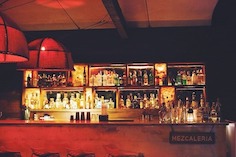"Everything is Telling You to Drink"
The focus on the individual's wider surroundings has given rise to the concept of Alcogenic environment, whereby features, such as alcohol outlet accessibility or marketing, within a person’s surroundings influence patterns of alcohol consumption.

A qualitative study, published in Addiction Research and Theory, has examined how 12 young people relate to and give meaning to the environment where they consume alcohol.
Some of the key themes the interviewers uncovered included:
Accessing Alcohol – The participants commented on the waiting time and the number of staff serving at bars. Lack of alternative social activity increased alcohol consumption. The distance between venues decreased access. People have become desensitised to drink aware logos. Longer opening hours promoted alcohol access.
Communicating with Others – All participants preferred environments that promoted social interaction and a shared sense of belonging.
Consuming Food and Drink – Participants described drinking while waiting for food. Some young people described eating as ‘slowing down’ consumption.
Dancing to Music – People rely on drinking to stay hydrated, provide energy and confidence. For some, dancing sped up drinking so they didn’t have to carry a glass.
Grasping Objects – The shape, size and colour of container influenced the quantity of alcohol consumed.
Putting on Objects – If there were less space to place their drink people would buy less alcohol or consume quicker to avoid holding. People tended to drink quicker if they were standing.
Viewing Objects – People commented on the bright flashiness of alcohol advertisement compared to soft drinks. The lighting gave the illusion of night time.
It is evident that there are obvious factors within the environment that influence the alcohol consumption behaviour of young people. Further understanding the alcogenic environment can help inform prevention intervention.
